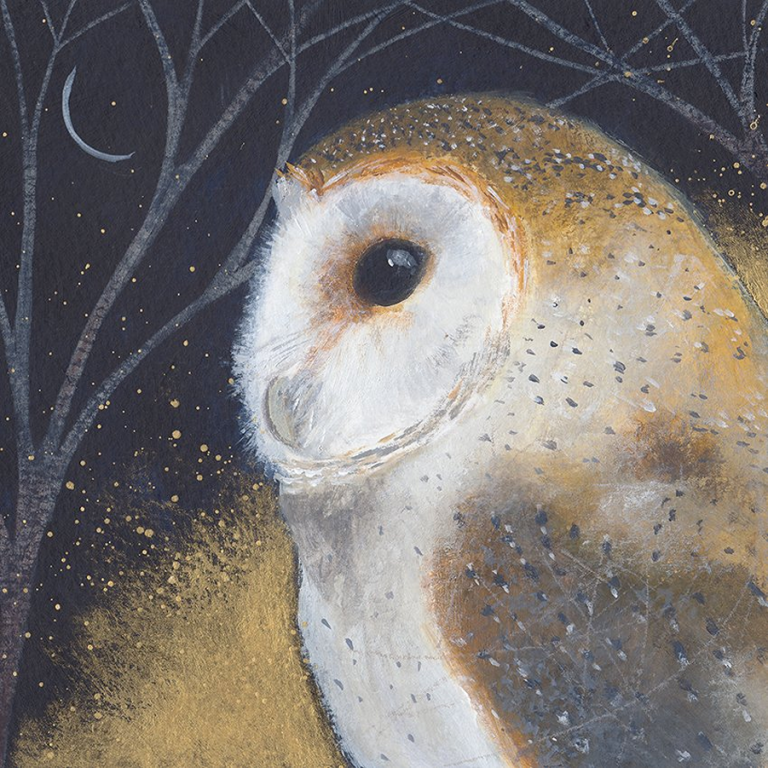
The Lake District is home to England’s tallest mountains, drawing hikers and nature lovers year-round. These peaks stand out not just for their height but for their rugged beauty and the sense of wildness they offer. Whether you’re after a tough climb or a scenic walk, the Lake District’s mountains define England’s outdoor spirit.
When you head out for a walk in the countryside, always stick to the Countryside Code to help protect wildlife (and dogs). By the sea, take a look at tide times and check any warning flags before heading out. For tips on looking after your dog near the beach, have a read of our guide on seaside safety for dogs
the Lake District’s Tallest Peaks

All of England’s highest mountains are in the Lake District. The Mountains of England and Wales is a guide to 254 summits in a series of 60 walks.
All should be approached with care, due to changeable weather (rain, wind, fog and slippery areas). Only climb mountains if you’re fit, and carrying proper gear. Don’t take dogs near high peaks or cliffs. Read our post on hiking mountains.
The Lake District’s mountains rise sharply from the rolling hills and valleys, creating some of England’s most dramatic scenery. The tallest peaks cluster mainly in the central and northern parts of the national park, each with its own character and charm. These mountains attract walkers of all levels, whether you want a challenging scramble or a steady hill climb with rewarding views.
Let’s look at the three highest peaks, all within easy reach of each other. They form the backbone of the area’s high fells and provide a feel for the wild, rugged nature of the Lake District.
Scafell Pike: England’s Highest Point
Standing at 978 metres, Scafell Pike (top image) is England’s tallest mountain. It dominates the western part of the Lake District and offers panoramic views that stretch far beyond the region on clear days. The summit is rocky and exposed, rewarding climbers with a true sense of achievement.
You’ll find several popular routes to the top, from the smooth paths of Wasdale to the steeper climbs from Borrowdale and Langdale. Its height and prominence make it a must-visit for anyone wanting to stand on England’s roof.
Skiddaw: The Northern Giant
At 931 metres, Skiddaw towers over the northern Lake District near the town of Keswick. Unlike Scafell Pike’s rugged peak, Skiddaw has a broad, grassy ridge and softer slopes. Its rounded profile offers a different kind of beauty.
Hikers often enjoy its straightforward climbs and the chance to experience expansive views over Derwentwater and beyond. Skiddaw feels a little quieter, making it perfect for those seeking space and peace away from busier paths.
Helvellyn: The Eastern Icon
Helvellyn reaches 950 metres and sits near the eastern edge of the central fells. It is famous for its narrow ridges and dramatic edges like Striding Edge, a sharp arête that tests walkers’ sure-footedness and nerve.
This mountain is a favourite for advanced hikers wanting a memorable climb with steep drops and stunning views of Ullswater and the surrounding valleys. Helvellyn feels alive with history and character, standing out for both its height and its thrilling terrain.
The Area Covered by These Peaks
These three peaks lie within a compact area inside the Lake District National Park, roughly between Keswick in the north and Wasdale in the west. The fells here are among the highest in England and create a natural playground of ridges, valleys, and lakes. This area is often called the ‘High Fells’ and is the heart of the park’s mountainous terrain.
In simple terms, if you imagine a triangle, Skiddaw marks the northern point, Scafell Pike sits near the southwestern corner, and Helvellyn stands towards the east. This spread gives walkers plenty of options for routes and challenges, ranging from gentle inclines to steep climbs.
Other Noteworthy Peaks Close By
Beyond these three giants, the Lake District is packed with other tall mountains worth mentioning:
- Great End (910 metres), near Scafell Pike
- Blencathra (868 metres), close to Skiddaw
- Bowfell (902 metres), near Scafell
Each of these peaks adds to the variety of terrain and views you can experience in this compact but diverse area. This mix of powerful high peaks and quieter ridges makes the Lake District a unique place for mountain lovers. Whether you’re chasing the tallest point or exploring a less crowded summit, these mountains offer something real and unforgettable.
Highlights of the Highest Mountains

Coniston, Pastel Pine
The Lake District’s tallest peaks each offer something special—whether it’s a challenging climb, a striking ridge walk, or accessible trails with great views. These mountains bring a tangible sense of accomplishment and some of the best panoramas you can find in England. Here’s a closer look at the key features and top hiking highlights for the highest fells.
Scafell Pike: England’s Tallest Summit
At 978 metres, Scafell Pike stands firm as England’s highest point. The climb up this iconic peak is varied, with popular routes catering to different experience levels. Two of the best-known approaches start from Wasdale Head and from the Corridor Route, which begins near Seathwaite.
The Corridor Route cuts through steep valleys and passes rocky outcrops, making the ascent feel rugged without being too technical. The Wasdale path is steeper and shorter, offering a more direct but demanding climb. Both routes reward walkers with rugged terrain and a sense of wilderness as you near the summit.
From the top, you’ll see a breath-taking 360-degree view. On clear days, the sight stretches to the Isle of Man, Scotland’s mountains, and even the hills of Wales. The summit cairn stands as a proud marker for all those who reach England’s roof. What makes this climb special is the blend of natural beauty and the quiet satisfaction that comes with standing at the country’s highest point.
Helvellyn and the Thrill of Striding Edge
Helvellyn reaches 950 metres, known especially for Striding Edge, its sharp and famous arête. This narrow ridge walk draws many walkers seeking a mix of excitement and manageable challenge. It feels like a fine balance between adventure and safety.
The path along Striding Edge is steep and exposed, ideal for those who want a taste of scrambling without needing technical gear. From the ridge, you get stunning views down to Red Tarn, a peaceful mountain lake cradled below. Nearby, Swirral Edge offers a similar narrow rack guiding you toward Helvellyn’s summit.
Helvellyn’s height places it firmly among the Lake District’s giants, but it stands out because of its dramatic ridges and the sheer sense of scale. The views from the top stretch across the Eastern Fells, with distant lakes and valleys providing a rich panorama to soak in.
Skiddaw and Blencathra: Gentle Giants with Great Views
Skiddaw and Blencathra offer a different mountain experience. At 931 and 868 metres respectively, they are high yet feel a little friendlier underfoot. Their grassy slopes and less technical trails make them popular with walkers looking for impressive views without steep rock scrambles.
Skiddaw’s ascent is often described as steady but not too steep, drawing hikers who enjoy a quieter route with wide open skies. Paths from Keswick or the northern side take you through green pastures and up broad ridges, allowing space to breathe and enjoy the natural surroundings.
Blencathra sits close by, its jagged outline rising sharply in some parts, but also offering gentler northern routes like from Scales. The views from its summit include the Eden Valley and the distant Pennines, making the trek rewarding beyond the effort involved. Both mountains balance accessibility with beauty, appealing to walkers who like to enjoy the landscape at a comfortable pace.
These gentle giants prove that height is not the only measure of a great walk. They offer a mix of ease, awe, and sweeping views, making them essential climbs for anyone exploring the Lake District’s finest peaks.
Other Noteworthy Peaks
Beyond the highest fells, the Lake District offers a variety of other peaks that hold a special appeal. Each has a unique personality shaped by history, landscape, or simply the experience they offer on foot. For walkers who want a mix of challenge, beauty, and stories from the past, these mountains are well worth the visit.
Old Man of Coniston: A Mountain with Mining History

The Old Man of Coniston stands about 803 metres tall, making it one of the taller peaks in the southern part of the Lake District. This mountain has a rich mining heritage. Copper mines here were active for centuries, and you can still spot old mining remains along some paths. This gives the mountain extra character beyond its natural beauty.
Hiking routes up the Old Man vary. The popular path from Coniston village starts on gentle slopes before reaching more rugged terrain near the summit. Many walkers appreciate how the terrain changes from grassy sections to rocky outcrops, offering a bit of everything along the way.
The views at the top reward your efforts with sweeping scenes across Coniston Water and towards the central fells. This peak appeals to those who enjoy both mountain scenery and a touch of industrial history beneath their feet.
Haystacks: Wainwright’s Favourite
Haystacks may not be the tallest at just over 597 metres, but it holds a legendary place among Lake District walkers. It was a favourite of Alfred Wainwright, the famous fell walker and guidebook author. He found something special in its rugged charm, quiet atmosphere, and the way its ridges and tarns (small mountain lakes) feel intimate yet wild.
The landscape around Haystacks includes rough rock, heather moorland, and characterised ridges that make it stand out from other hills of similar height. It often forms part of longer walks in the area, linking with nearby fells like Buttermere.
Walkers love the varied terrain here, which provides plenty of chances to explore without the crowds. If you’re after quiet beauty with a bit of a rough edge, Haystacks fits perfectly.
Catbells and The Langdale Pikes
Catbells is well known as a gentle introduction to the Lake District fells and a favourite for families and walkers new to the hills. Standing at just 451 metres, it offers a manageable climb with plenty of rewards.
Its paths are clear and pleasant, and the summit has great views over Derwentwater and the surrounding valleys. The walk up Catbells feels welcoming, with a steady but gentle incline that suits many walkers.
There are however gaps between pillars at times, so always take care.
Nearby, the Langdale Pikes form a sharp and striking group of peaks. They rise somewhat higher but remain accessible for those with moderate walking experience. These pikes, including peaks like Harrison Stickle and Pike of Stickle, have exciting ridges and dramatic shapes that are hard to miss.
Routes here range from easy walks to short scrambles, making Langdale a playground for walkers who want a bit more adventure without extreme difficulty. Together, Catbells and the Langdale Pikes offer something for almost everyone, from families to keen hill walkers.
Fairfield: The Central Fells’ Peak
Fairfield sits at 873 metres and is the highest peak in the Central Fells. While not as tall as some of the nearby giants like Helvellyn, it still commands attention with a broad, rewarding summit. Climbers often tackle Fairfield via the popular route starting from Ambleside, which ascends through wastwater valleys and ridges with good paths and gentle slopes.
The summit is wide and open, offering stunning panoramas over the Helvellyn range and the valleys below. It’s a favourite for walkers who want a rewarding peak without the exposure of Helvellyn’s sharper ridges. Fairfield also marks a key point on the famous Coast to Coast walk, which adds to its appeal. The views from the top create a perfect moment to pause and take in the heart of the Lake District’s central fells.
Conclusion
The Lake District’s highest mountains offer something for every walker, from the challenge of Scafell Pike and the dramatic ridges of Helvellyn to the gentler slopes of Skiddaw. This range of peaks means anyone can find a route that fits their experience and pace while soaking in stunning views and rich local heritage.
Whether you are new to mountain walking or seasoned on the trails, these fells invite you to explore and enjoy England’s finest high ground. Remember to prepare well, respect the weather, and take time to appreciate the natural beauty around you. The Lake District’s mountains remain a special place to return to again and again.






